This is a collection of images from April, each of which lacked a posting of its own.
If a robin is swallowing worms, it must be spring. This is a female.
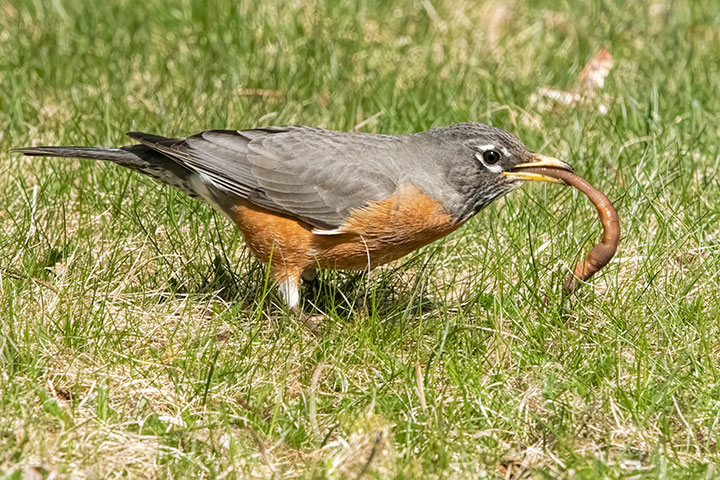
The Varied Thrush is a close relative of the robin, but unlike it, this thrush is skittish and flees from suspected intruders. Indeed, while the above robin was casually photographed from nearby, this close shot of the Varied Thrush required the use of a car as a bird blind.
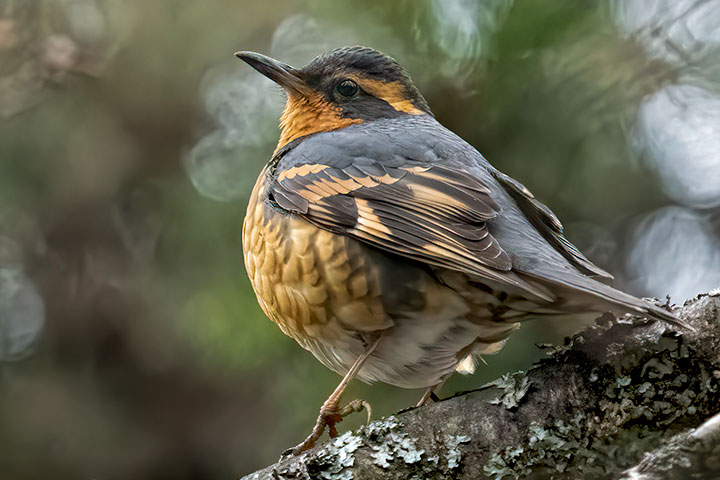
Every April brings the Bombylius major in numbers to the back yard. This tiny bee-mimic fly is a nectar robber. It uses its long proboscis to steal nectar and pollen from a flower without ever touching either anthers (male) or stigma (female). In this way, it violates the contract between flowers and insects: nectar in exchange for pollination. However, it is likely that its long legs and proboscis evolved, not for larceny, but to protect it from crab spiders lurking among the flowers.
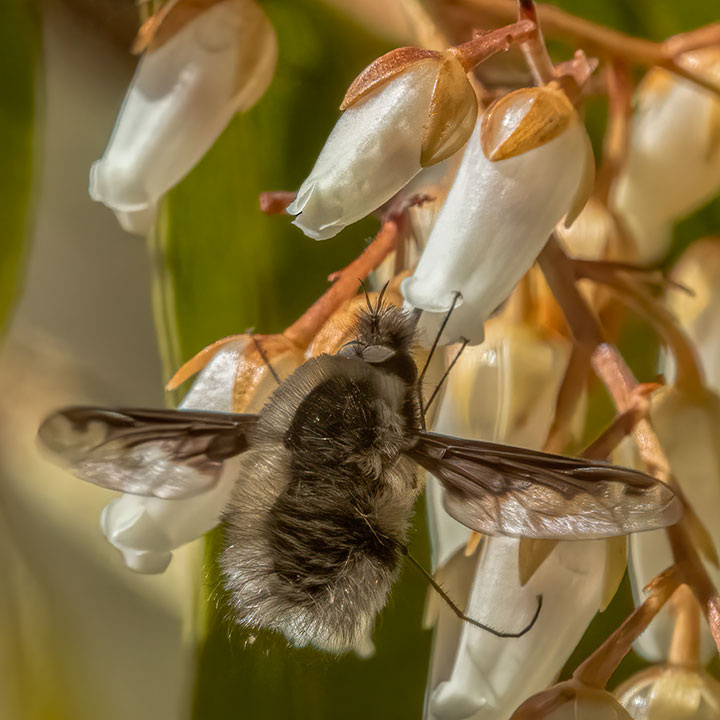
I know of two heron rookeries adjacent to Kootenay Lake. A number of Great Blue Herons flying around this one suggest that it is active again this year.
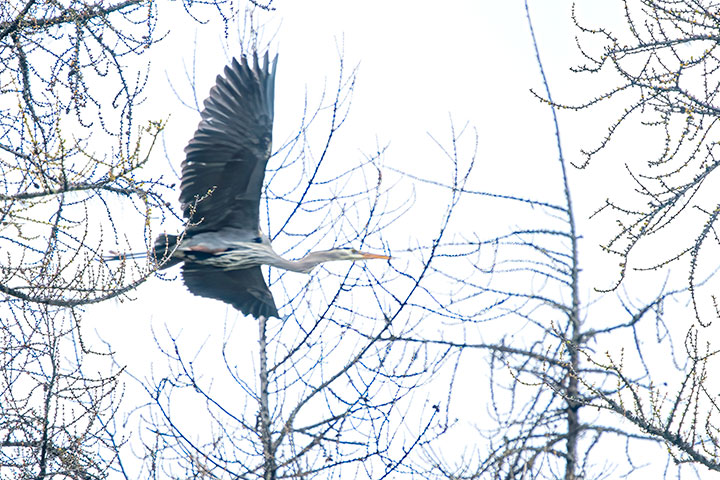
A summer staple around the Lake is the Tree Swallow. It nests in flicker cavities and collects insects for its offspring with acrobatic flights over the water.
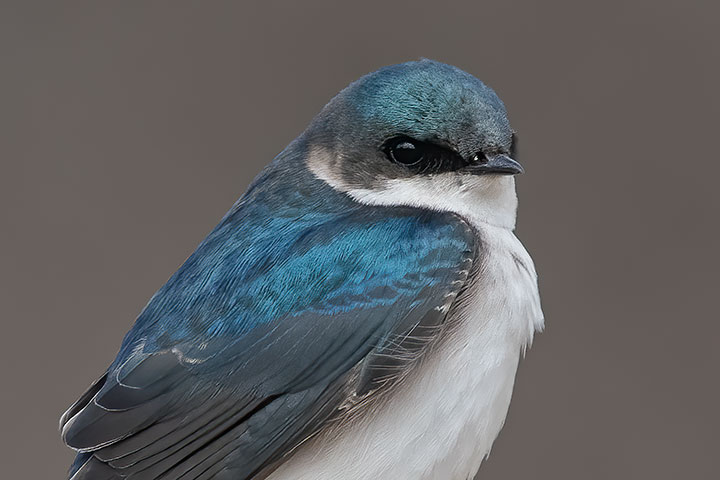
A bird with a remarkably similar name, the Tree Sparrow (as distinct from the Tree Swallow), has a rather different behaviour. It passes through here twice a year during migration. When present, it secretively forages for seeds and insects low in the brush.
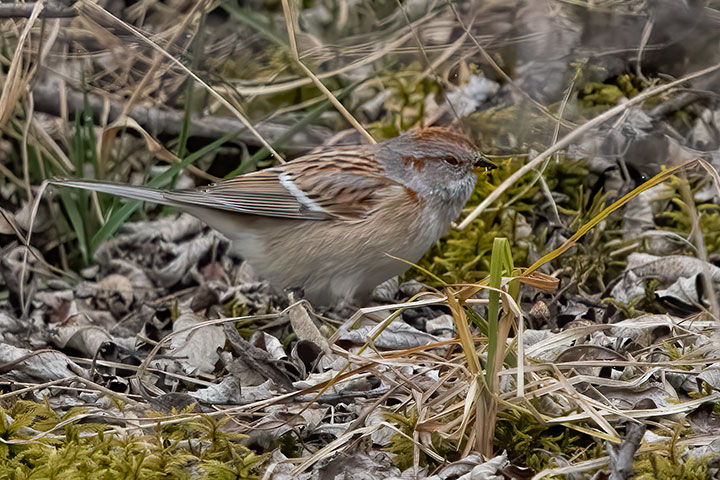
When I see a Red Squirrel with something in its mouth, that something is usually comestible. But, here the squirrel is carrying nest-building material.
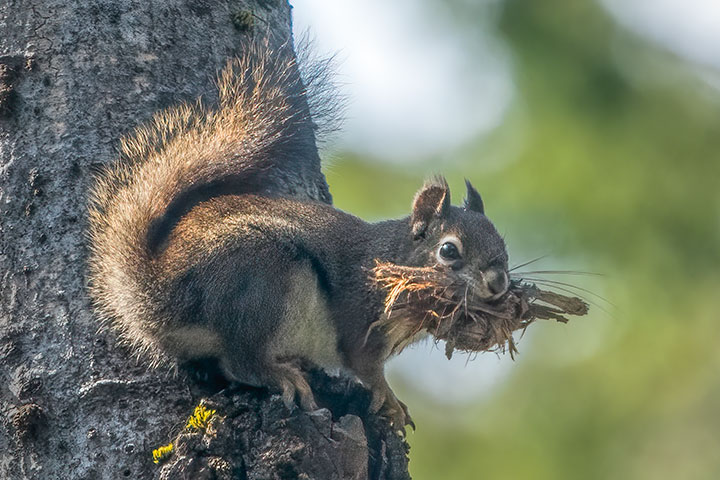
A bale of painted turtles is lounging on a loafing log. A reasonable question is: Why are they all facing in the same direction? Curiously, there is an amazingly simple answer.
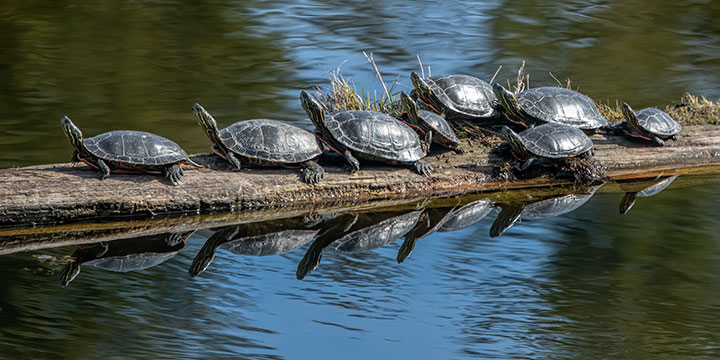
Columbian Ground Squirrels are now out of hibernation, and this one has pulled sentry duty.
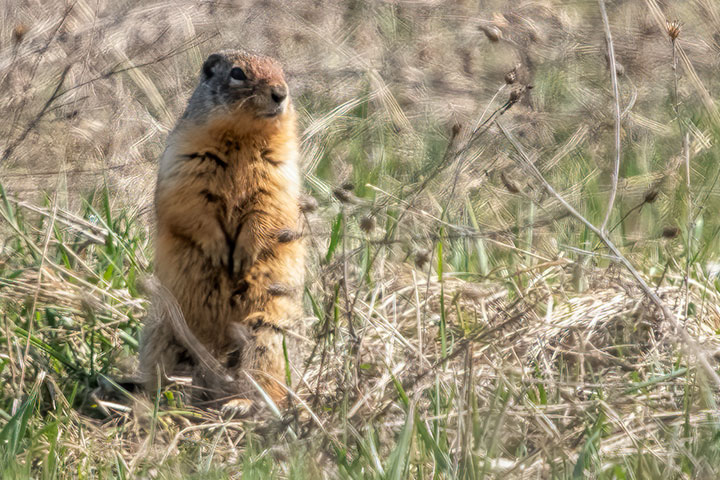
It is tempting to imagine that every sparrow one sees is a Song Sparrow. But, while ubiquitous, it is not exclusive. This is a Savanah Sparrow, a bird passing through as it heads north to breed.
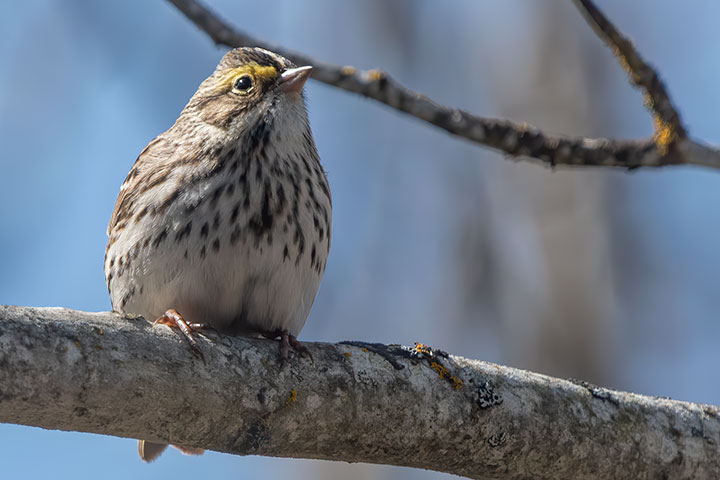
Much the same can be said for the White-crowned Sparrow — most seen are heading north.
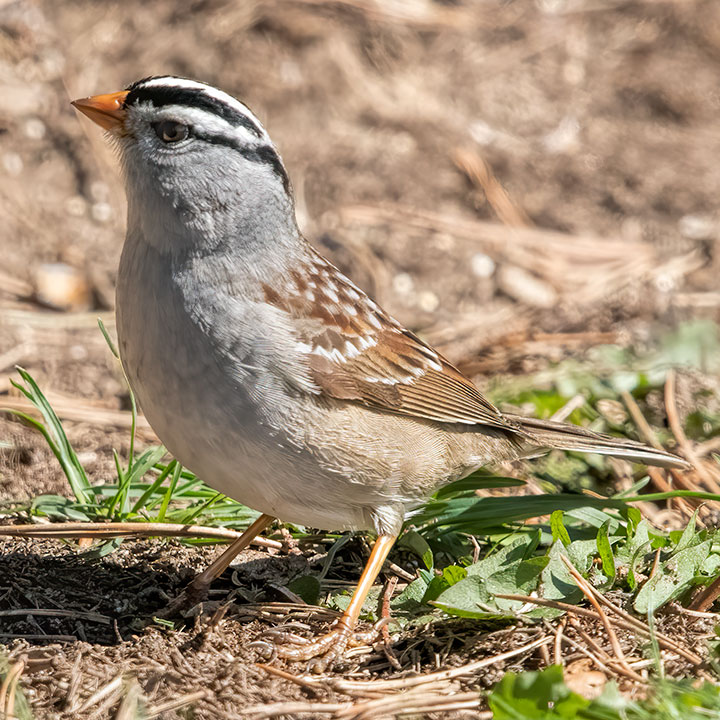
A male osprey flies by with a just-caught fish (likely a Kokanee).
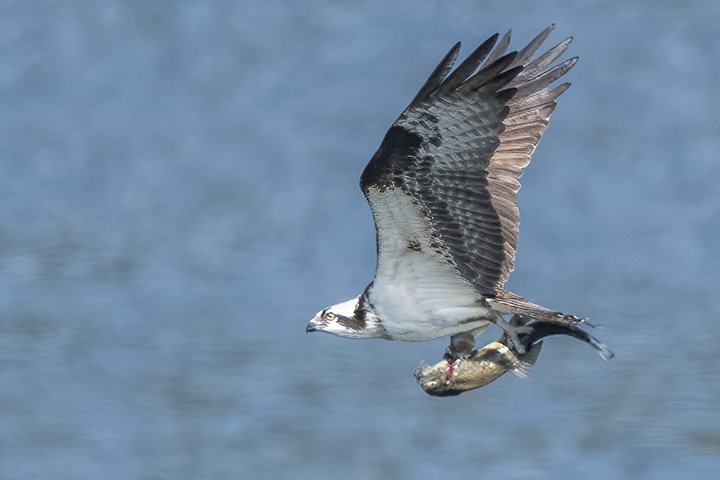
“I cannot abide all this pandering to those irrelevant species. I’m so outta here.”
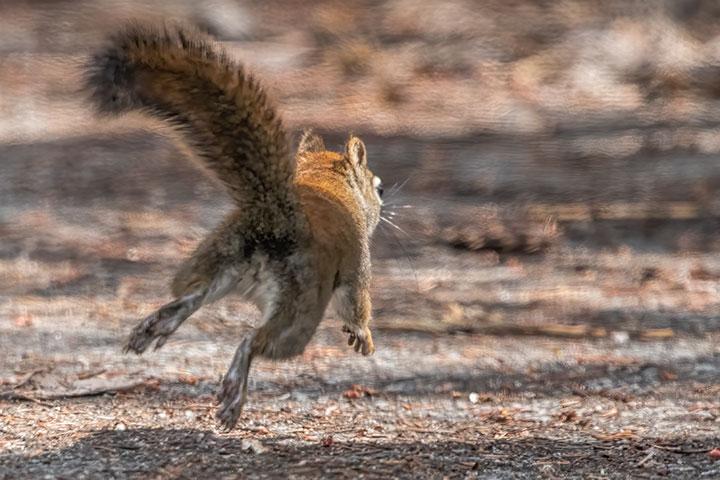

Great photos as always, Alistair! My two favourites are the swallow and the thrush. Are the turtles all facing the same way because they followed each other? And since they will just slip into the water, there is no reason to turn around?
Helen
Good Morning…good goulash…re the turtles..something to do with the sun..?..I thought facing..but it appears their `backs are to the sun..?
Hi – love this group of photos and just wanted you to know I’m looking at your offerings daily, tho I don’t comment. Have had 2-3 White-crowned sparrows at the feeder lately, and a chocolate coloured immature Red-winged Blackbird. Such a thrill, because I’ve never see so many birds here in the Little Slocan Valley as this year. I’ve seen a varied thrush on the lawn a few times in the past. Just noticed that a table-cloth around the back, the kind you’d put on a picnic table, that I used to cover a outside counter over winter, has been ripped open on both edges and all the white stuffing has been removed. Had to be the squirrel who’s been feeding freely under the feeder.
I have a flock of those white crowned sparrows at my feeders these days. Glad to have my identification confirmed!
This is a beautiful gallery of photos. We’ve been seeing the ground squirrel, which we thought was a marmot, at the west entrance to Nelson.
Christine, those beside Government Rd. (west of town) are, indeed, marmots. Marmots live among talus, Columbian ground squirrels dig burrows in fields.
A very nice Marxist definition of larceny: stealing without distribution. Here we have a clean example in Nature of the fetish. The mimic-bee (or fly to the naive investigator) divorces the nectar-gathering from its social function.
Doug, when it comes to nectar robbing, the Bombylius is a dilettante. The professionals in this activity are the wasps. As they lack the long proboscis, they just bite in through the petals and go straight for the nectar. Later in the season, most flowers will sport holes courtesy of wasps.
I’m thinking the turtles did follow each other, taking the easy transition from the water onto the gently sloping upward log. It does nicely align with the sun directly on their backs and the back of their upstretched heads (at the moment).
Tom, bingo. On the right (out of the picture) the loafing log slopes downward under the water. It provides an easy ramp for the turtles to follow onto the log. They all take it and end up all facing the same way.